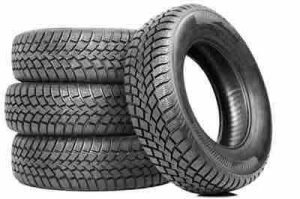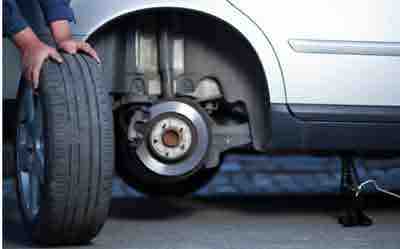You just watched a Formula 1 car race, observing how it took a crew a few seconds to change four tires of the sports car. Sounds amazing, right?
Now you wish to know how long does it take to change four tires and the factors that might determine the duration.
Every driver must know how long it takes to change the four tires of their cars and more importantly achieve a perfect alignment.
Nevertheless, it takes an average of 15 to 20 minutes to change four tires of a vehicle. However, this greatly depends on your level of experience, the tools you are using, and your methods.
Table of Contents
How long will it take you to change 4 tires and alignment?
Changing all four tires can take a fast process of five minutes for each tire. Changing your tires is the first process to getting your car geared up.
Balancing and alignment is crucial process that you must take into account after changing your tires.
It will take an average of 30 minutes to 1 hour to change four tires and alignment. Tire alignment is a crucial factor that determines your road safety.
This makes it important that you devote enough time to get right. Getting a proper alignment for your tires means that all tires are lined up properly with each other.
The wheels must match each other, and this is achieved by configuring the suspension system, and ensuring that the internal components of the cars are aligned.
Changing and aligning a four-wheeled car will need a four-wheel alignment mechanism. Your car might need a front end and thrust angle alignment system, depending on your car’s drive system.
To achieve a proper alignment, you need to meet the standard alignment procedures of your car.
This includes the specified degrees, positioning, and movement to place the wheels and axles in the same direction.
This wouldn’t pass as a quick process, as you need touches of professionalism to change four tires and also align them properly.
What you need to check before changing all 4 tires
Before changing all four tires on your car, there are certain factors that you must consider.
Here are a few things that you must check before changing all four tires
1. The type of vehicle
The type of car that you are driving is the first thing that you must check before changing all four tires of your car.
There are different tire replacement routines for double-wheel drive (2WD) vehicles and four-wheel drive (4WD) vehicles.
For 2WD vehicles, you must not change all four tires at the same time. On 4WD vehicles, you must change all four tires at the same time.
Riding a 4WD with tires of different quality, strength, and wearability places you at the edge of the risk margin.
Combining a tire with worn-out treads with three new tires can cause an imbalance in the transmission of excessive load on the system.
You stand a higher chance of seeing your gear ratios going out of proportion riding on an all-wheel drive with old and new tires.
2. Treading
Before you change all four tires of your car, you must check the tread of the tires. This includes the tread depth and tread thickness.
These factors as minor as they sound can throw your car off-balance during a ride. All tires must meet standard treading requirements for your car.
To check if you should change your tires by measuring your treading, you must evaluate your treading depth. The standard tread-depth for most new tires runs within 10/32 – 12/32.
For you to achieve accuracy in reading the tread depth, you might need to work with a technician.
If you notice that your tire has lost 2/32 – 4/32 tread depth, then it is the right time to change the tire. You should carry out a routine check on all your tires.
If you changed all four tires the previous time, all of them should wear down at the same rate.
If the treads on the other tires look worn out, then you don’t need a fairy to tell you that you should change everything.
How long will it take to balance new tires?
It takes an average of forty-five minutes to one hour to balance your new tires. Balancing new tires deals with balancing each tire to ensure that none of your tires rolls out of sequence.
For you to achieve an even distribution of weight, your tires must roll evenly. Tire balancing ensures that stability is maintained on all wheels, assuring you of comfort and safety.
You wouldn’t want to notice vibrations when you hit certain speed levels with your car.
Unbalanced tires also result in uneven tread wear, irregular load balance that gives your car a bumpy-wiggly ride. This process can affect your car’s fuel conservation or the state of your shock absorber, wheel bearing, etc.
There are a lot of factors that determine how fast the process of balancing your new tires will be.
The factors that determine how long you will spend balancing your tires include; your level of expertise, the condition of tires, tools/machine, and preferred method use.
The goal is that at the end of the tire balancing process, you must ensure that weight is evenly distributed across all tires.
How long will it take you to change 2 tires?
It takes an average of five minutes to change one tire, it will take up to ten minutes to change two tires. Changing two tires is not a difficult task as long as you have the required tools ready.
Most times, the procedure used in changing the tires plays a great role in determining the time you will spend on those tires. Your skillset in changing tires will also determine how long you will spend changing two tires.
A professional might take five minutes to change one tire and ten minutes on two tires. As an average car user, you might spend fifteen minutes changing the same two tires.
During an emergency, with a car jack, wrench, wedge, and other important tire tools, you can get your two tires ready in ten minutes.
How long can it take you to change a tire by yourself?

It looks easier to call a professional to help you change your tires or visit a service center. However, there are chances that your car might break down at the wrong time, and in the wrong place.
This leaves you with no other option than to fix those tires by yourself. With the correct set of tools, you can change your tire in fifteen to twenty minutes.
This greatly relies on the fact that you have learned the process and how to use the tools in your possession.
Let’s take this scenario, your car broke down in the middle of the road. That is not a good moment to learn how a car jack works or where to place the wedge.
For you to effectively change your tires yourself, you must have acquired these skills beforehand.
There are also chances that you have acquired basic skills in changing your tires, but this is the first time you are putting it to work.
In this case, it might take you up to thirty minutes to change a tire. To stay on the right path of safety, I will advise that you practice and master the process of changing tires before you hit the road.
Is it ok to have different brand tires on the front and back?
No, it is not ok to have different brand tires on the front and back.
You might stumble on a piece of information that will advise you that there is nothing wrong with having different brands of tires on the front and back wheels of your car.
The truth remains, tires from different brands have different production formulas, rubber composition, and tread patterns.
The tire diameters of tires from different brands are not always the same and risk running into having mismatched tires.
Having your car running on different brand tires with different tread patterns will affect the traction on the cars. This will play a huge role in the balance and control of the car.
You will always come across the same tire size from different brands. However, resist the urge to use different brands on the front and back wheels of your car.
A lot of times, the reason why we opt for different brand tires is to save costs.
But, with different tread patterns and tire quality from the different tire brands, you will find out that the different tires will have different wear effects.
To achieve an even tire system, make sure that you use tires from the same brand.
Can you drive with different size tires on the same axle?
No, you cannot drive with different size tires on the same axle. It is tempting to try driving with different size tires on the same axle. It is not only illegal to do so, it is also a dangerous journey.
Mixing different tires on the same axle provides an uneven wear effect on the tires and this may result in complicated issues with traction.
Mixing different tire sizes creates an unequal weight distribution that will affect your speedometer readings, ability to steer, traction, and car control.
Mixing different tire sizes on the same axle is a dangerous act; a time bomb waiting to explode.
Your car will lose its full ability to perform well. It will take time to pick up speeds and come to a halt.
This is not an event that you will love to experience when you should avoid danger. You should understand that mixing different tire sizes will result in instability.
You will run into a greater risk of damaging your wheel’s bearings. However, tire mixing dangers are not limited to sizes.
Mixing tire brands, tread patterns and depth have its disadvantages. Different tire brands have different quality structures for their tires.
When you mix different tires, there are chances that you will mix tires of different construction. You might end up mixing radial and cross-ply tires.
This is not only a great safety risk to drivers and pedestrians but is an illegal act in the UK.
Mixing different tires on the same axle provides an uneven stress tolerance on your four tires. Different tires have different strengths and weaknesses. The variations are unavoidable.
Their differences make it a bad idea to mix them, especially on the same axle. You wouldn’t want to experience a blowout or tire damage that might lead to a wreck.
The dangers of mixing different tires are not limited to different tire construction types. You should not also mix tires of different tread patterns and depths.
Can wrong size tires damage transmission?
No. Wrong size tires will not damage the transmission. There are a whole lot of disadvantages of using the wrong size tires, but damaging transmission is the least that can happen.
Having wrong-size tires wouldn’t damage or directly impact your transmission, but it can affect your final drive ratio.
Mismatching your car with large-sized tires will reduce your final drive ratio. This will result in a lower miscalculation of your speedometer.
The difference is vice versa with smaller-sized tires. However, wrong size tires won’t damage your transmission but the effect on your final drive ratio is similar to a damaged transmission.
Conclusion

Every driver must learn road safety practices. From knowing basic things as small as how long it takes to change four tires, to learning advanced ways of changing tires, we should equip ourselves with necessary safety knowledge.
This will not only help you maintain the durability of your car but also assure your safety on the road.
Most road accidents across Europe are incidents that should be avoided if the drivers had proper road lessons and took precautionary measures.
You must stick with the manufacturer’s instructions and tire requirements for your 2WD or 4WD vehicle.

